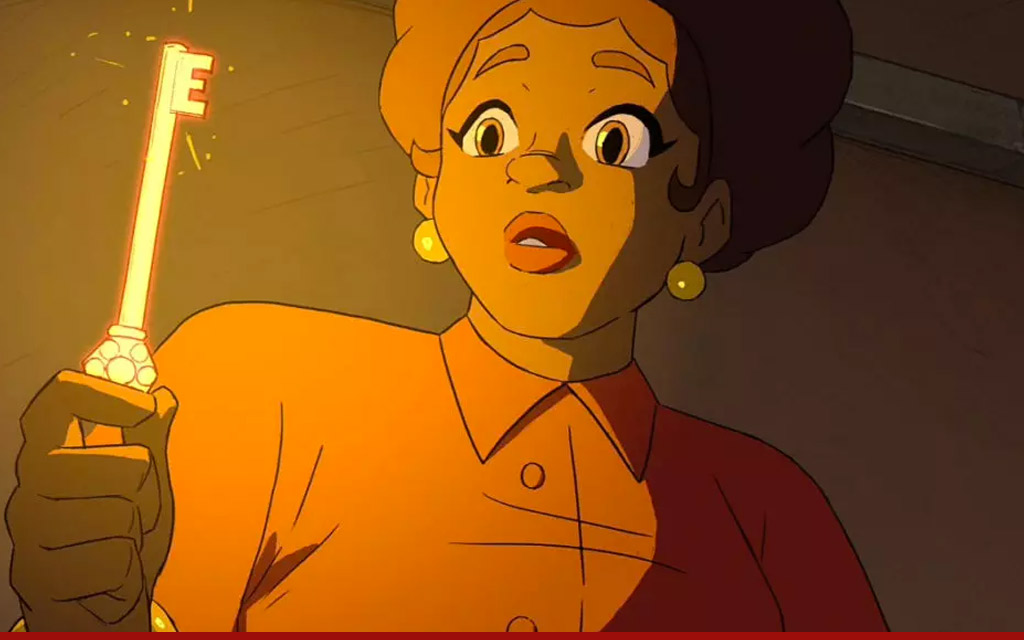More than one third of the world’s population plays video games. The Games for Change Festival spotlights how games can be a force for good
At this year’s Games for Change Festival in New York City, I kept thinking about the “deaf, dumb, and blind kid” in The Who’s popular rock opera, Tommy, as I donned my Covid face mask, my VR headset, my controllers, and a stereophonic headset to enter a world of games that promise to have social impact.

Founded in 2004, the Games for Change Festival was conceived as a way to boost the creation and distribution of social impact games. The event was founded at a time when video games were being blamed for just about everything from violent behavior to ADHD.
In the late 90s, violent video games became fodder for Congressional hearings, ultimately resulting in the creation of ratings and standards. So-called “first-person shooters” like Doom and Mortal Kombat were the rage, so to speak. They also enraged parents, teachers, legislators and behavioral scientists who were concerned about the effects of these games. This fueled an onslaught of research aiming to equate violent video games with violent behavior in real life. Tragic shootings like the massacre at Columbine High School in Colorado were linked to players of video games. Boundaries were being tested. There was even a morally-despicable Columbine Mass Shooting RPG (role-playing game) released commercially in 2005.
These early years of video gaming were a tumultuous time for parents, legislators, and a young video game industry that faced little research to support claims on any side of the debate. Slowly the supposed direct correlation between playing video games and violent behavior unraveled. Henry Jenkins, an educational scholar at MIT, wrote a seminal article debunking myths about video gaming as part of a PBS series, circa 2004. “According to federal crime statistics, the rate of juvenile violent crime in the United States is at a 30-year low. Researchers find that people serving time for violent crimes typically consume less media before committing their crimes than the average person in the general population,” he wrote. “The overwhelming majority of kids who play (games) do not commit antisocial acts. According to a 2001 U.S. Surgeon General’s report, the strongest risk factors for school shootings centered on mental stability and the quality of home life, not media exposure,” continued Jenkins.
Most importantly, he pointed out that panic over video games was doubly harmful, because it makes adults suspicious of kids who may already be out of the mainstream because they turn to games. This last insight turned out to be prescient because gamers often turn to gaming when the real world leaves them socially ostracized.
All the World’s A Gamer
Today, the world’s population hovers at around 8 billion, and nearly 3 billion of them profess to play video games. Insider Intelligence (paywall) estimates that more than half (54.2%) of the US population plays digital games of some sort, with mobile gaming the largest segment.
In the nearly 20 years that The Games for Change Festival has been in existence, its mission has grown in popularity. In 2017, Asi Burak, then the President of Games for Change, wrote Power Play: How Video Games Can Change the World as an effort to move beyond the hand-wringing and spotlight games as a force for good.
“Today,” says Susanna Pollack, president of Games for Change, in an email, “video games are a full-fledged entertainment medium with immersive storytelling, stellar production values, and a much wider, more diverse audience.” (Pollack will be a speaker at the Techonomy 22 conference in November.) She continues: “We’ve seen significant advances in technology, including improvements in graphics and new user interfaces like XR and immersive media. Impact games are becoming increasingly sophisticated, as emerging technologies open up new possibilities for creative storytelling to drive empathy and understanding around complex issues, raise awareness and inspire action. We’ve also seen profound cultural shifts in the gaming industry and gaming communities, which have made Games for Change increasingly relevant to a wider range of people across different fields and sectors.”
This year’s festival drew heavily on virtual reality and beyond. “As the metaverse starts to take shape and we explore this new media frontier, it’s no longer about games measuring up to other forms of media — it’s about games leading the way and driving new ideas and best practices for impact,” Pollack wrote.
So what did social impact look like in the new gaming environment? I spent a good deal of time exploring the Games for Change immersive experiences. There was Goliath, a 25-minute-long VR experience that puts you into the world of Goliath, a guy diagnosed with schizophrenia. It shows how gaming plays a part in his life. You get to experience the story of a schizophrenic and his relationship to games. While the story was engrossing (and a bit spatially disorienting) I wasn’t convinced that I understood or empathized with what it’s like to be a schizophrenic after the episode.

Another immersive VR game focused on humanizing the abortion debate through storytelling. The Choice let me interact with a Texas woman’s painful abortion choice. Next-gen technologies like volumetric capture combined with stereoscopy and an ability for you to choose the story path. It made me feel as if I were conversing with a woman. Again, I’m not certain I would have felt less empathetic if it were a 2D video.
Then I entered the culinary world of Schell Games, a company that specializes in VR experiences in education. I played Lost Recipes, which combines cooking lessons with a romp through history via cuisine. It was impressively fun, interactive, and educational.
At Tripp I used VR to guide me through a new form of meditation, a cross between a psychedelic trip and Ram Dass-inspired contemplation.

that unlocks awe, wonder, calm, and focus.”
Dot’s Home, one of the festival’s award winners, does not rely on VR but proceeds in lovely 2D. It had you enter the world of a young Black woman in Detroit living in her grandmother’s home. She time-travels with a special key that lets her relive moments in her family’s history. Race, place, and home collide in difficult choices throughout the game.
Noticeably absent from the immersive experiences available at the event was anything to do with climate change. But the Games for Change Student Challenge invited students to focus on climate and awarded prizes.
The gnawing feeling I had with all of these extended-reality (XR–using either virtual reality or augmented reality) experiences was twofold. First, if games are to have a social impact, then they need to be accessible to the populations who could benefit most. And the majority of the gaming world is not yet playing in VR. It made me think every VR/XR developer should also have a 2D, mobile-accessible version to reach a wider population. Maybe it would be less immersive, but it might have a greater impact.
Tied closely with this notion of gaming inclusivity is the need for the gaming community to do some soul-searching about what the XR component adds to the experience. It reminds me of watching a great movie in 4K instead of 8K resolution. Doubling the pixels is interesting, but compelling content trumps resolution. XR needs to be implemented in ways that make the experience absolutely unique.
That said, gaming is having its moment. This month Netflix will dive into mobile gaming with a BAFTA-winning video game called Before Your Eyes. You control the storyline, encountering memories on the way to the afterlife with a blink of your eyes, literally.
And most of today’s nascent metaverses, from Roblox to Fortnite, Decentraland to Sandbox, are all based on gaming engines and game mechanics. Gamification has been used to help people tackle mental health issues, opioid misuse, and bullying, with companies like Play2PREVENT. XR technologies are helping people lose weight and, stay fit and new learning environments like these metaversities offer new ways to learn. Games will change and we will change because of them. Hopefully for the better.




